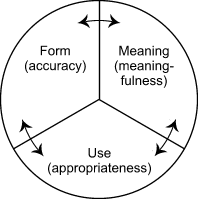
Talking about Past
Events
Using the Completed Aspect of Verbs
Click on a category, and study each grammar point.
![]()
In the completed aspect, the -um is affixed before the first vowel of the root. The affix mag- becomes nag- and is affixed before the first syllable of the root. Similarly, the ma- affix becomes na- and is affixed before the first syllable of the root.
example:
Click on the green button to listen to the
sentence.
![]() Kumain siya.
Kumain siya.
![]() Nagaral ako sa
laybrari.
Nagaral ako sa
laybrari.
![]() Natulog sila sa otel.
Natulog sila sa otel.
![]()
The completed aspect of verbs is used to indicate an action that has started and has been completed or finished. This aspect is used when you describe past activities. Oftentimes, a phrase or word that indicates past time is used.
Verb |
Actor (focus) |
Location |
Time Expression |
Kumain |
siya |
|
kanina |
Nag-aral |
ako |
sa laybrari |
kagabi |
Natulog |
sila |
sa otel |
noong Sabado |
example:
Click on the green button to listen to the
sentence.
![]() Kumain siya kanina.
Kumain siya kanina.
![]() Nag-aral ako sa
laybrari kagabi.
Nag-aral ako sa
laybrari kagabi.
![]() Natulog sila sa otel noong
Sabado.
Natulog sila sa otel noong
Sabado.
![]()
Aspect in Tagalog is indicated by means of verbal inflection that includes adding the affixes na- to the root of ma verbs and nag- to the root of mag verbs and -um to the root of -um verbs.
![]()